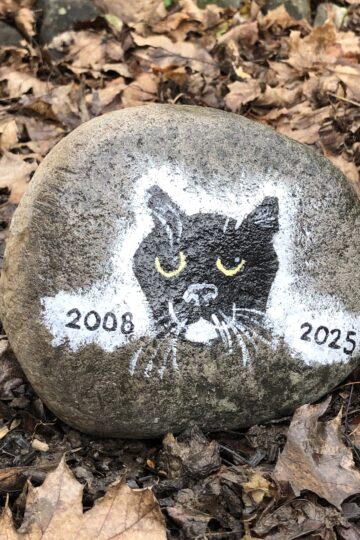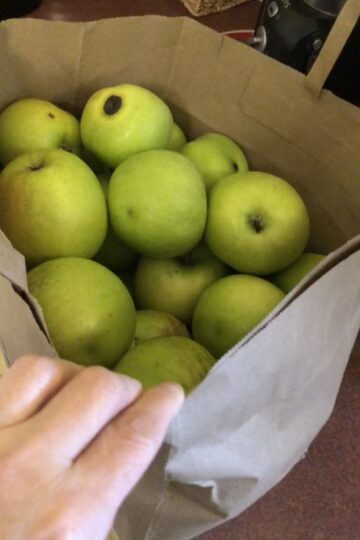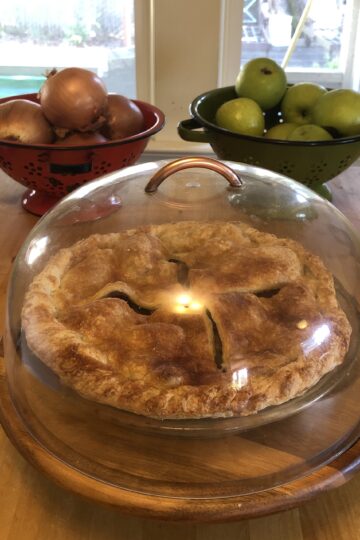The Great Depression -- Everything Old is New Again?

So why are we looking to the depression era as a source of inspiration?
Is it nostalgia for simpler times, before electronics became both a need and a nuisance?
Or are we seeing the diehard frugality of our parents and grandparents through new eyes?
Knitting, quilting, and backyard chickens have reached the pinnacle of hip. Even cobblers are experiencing an unforeseen rise in business.
So I ask, what can we learn by the menders, fixers and savers of those who survived the great depression? Those who learned how not to waste?
The NY Times recently published a moving article titled, Making Ends Meet in The Great Depression that gleaned the memories of those who lived through the great depression:
"Back then there was little money for food, let alone new curtains, but people found ways to cope. Backyard gardens were cultivated not because of a sudden itch to eat locally grown produce, but out of necessity; homeowners did their own repairs and found ingenious ways to make their homes functional and attractive."
Hmm . . . sounds familiar.
Timothy Egan's The Worst Hard Time: The Untold Story of Those Who Survived the Great American Dust Bowl. (A 2006 National Book Award Winner) chronicles the background and hidden stories of the people behind the environmental disaster that was the dirty thirties. Egan neither romanticizes nor sensationalizes this era. Instead, the author follows a few families in the hardest hit counties of Texas and Oklahoma to humanize the experience. Egan skillfully outlines the events that led to the dust bowl, making this one of the few book purchases I've made since joining The Compact, (buy nothing new) in 2007.
I have written previously about this book on The Non-Consumer Advocate, and had asked readers to share their family's depression era stories on the blog. The subsequent comments were incredibly moving and inspirational; and brought tears to my eyes.
I think there is much to learn from the lessons learned by those who survived the great depression. An appreciation for food on the table, money put aside and the health of loved ones can get away from us in our go, go, go world.
These lessons are worth saving.
Did your family struggle through the great depression? Did your grandparents continue with the skills learned during lean times? Please share your stories in the comments section below.
Katy Wolk-Stanley
"Use it up, wear it out, make it do or do without."




Both of my grandparents have passed away so I don't have access to many of their stores anymore but I do remember my Grandpa talking about he and the other children spending time in the winter walking along the railroad tracks looking for pieces of coal that would fall off the trains so that they could heat their homes.
I ran into this site a month ago or so and spent several evenings reading the stories. It's a collection of stories/comments about the Depression gathered by the Ohio Dept. of Aging. I hope it's ok to post this link.
http://www.aging.ohio.gov/news/greatdepressionstoryproject/volume1.aspx
My Grandma keeps everything. If I didn't know she lived through the depression, I would have thought she was a hoarder. She has a pantry where you can find items like; tinkertoys from the sixties, yarn and string from who knows when and all her old fashionable clothing, which is really fun to go though on a rainy day. She still has my first ponytail cut off my head when I was three years old. This tendency has been passed down and the phrase "You'll never know when you might need a....(ball of string, bread tie, saftey pin etc)... is a familiar refrain that has echoed throughout my years. She taught us to make a delicious meal when other people would say there is nothing to eat. The lady has got skillz. Depression-era skillz.
Katy- I was born to older parents in 1958 (a menopause baby). Both of my parents lived through the Great Depression. My dad, born in 1909, was the eldest of 8 children. He worked like an adult from the time he was a child. Though barely literate, he was incredibly skilled with his hands and had a near photographic memory.
My mom was born in 1920, second of 4 children. Her father, who owned a machine shop, died from tuberculosis when she was 12. Neighbors banded together and moved a log cabin to some donated land for granny and her kids to live in. Granny worked cleaning, mending, and sewing- anything to earn a little money for her family.
They married December 24, 1935 and had a ready made family. Dad had custody of my half brother from a previous marriage. Mom always laughed and said that she and AG 'grew up ' together. (Dad was 26, Mom was 15, and AG was 5).
Dad was a born salesman and later made a career of it At that time though, he worked wherever he could. Instead of using money, he traded his services and/or goods for things they needed. Their first home was attained by trading. Dad swapped a model T Ford for it!
So I was blessed with LOADS of stories about the "good old days" when things were tough and deals were sealed with a handshake. I treasure what they taught me from those bygone times.
My grandparents (the set that had immigrated to the US by then) married in 1930 and had the first of their three children 5 years later. During the 30's in New York they were busy trying to organize a union, and advocating for other "radical" ideas like the 40-hour work week, social security, and that type of thing. They managed to buy a foreclosed home in Brooklyn in 1937 with some insurance money that a relative received and loaned them (and their parents moved into the small house with them). My Grandparents lived there until my Grandmother's death more than 60 years later.
Previous postings on this blog about food storage containers have reminded me of my grandmother. She always saved glass jars and waxed cardboard milk cartons to store food (and send food home with her adult children and grandchildren whenever they visited).
Both of my parents were children during the depression. My father was raised in a very supportive community (Beaux Arts, WA), so despite having little money, they had community support. My mother was raised in an isolated high-desert area of Idaho and she and her family starved during the depression. She told us stories about hating cornmeal because they couldn't afford flour, so her mother made bread out of cornmeal. During winter it would freeze in her horse's saddlebags outside the schoolhouse. A few years ago we explored the 'ranch' my grandfather unsuccessfully farmed, where my mother was raised. We crawled under the house and found the detritus of those hard times, including shoe remnants that had obviously been cobbled multiple times, clothing crammed into the chinks of the walls to keep the cold out, and canning supplies.
I am the child of children of the depression. It shows in how I was raised and how I now live.